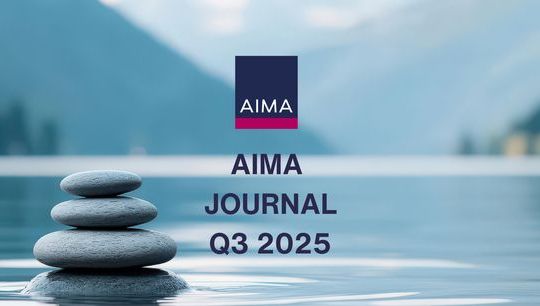CEO blog: November 2018 notes
By Jack Inglis, CEO, AIMA
Published: 16 November 2018

As I write this, I am watching the British Prime Minister being grilled in Parliament over the draft Brexit deal. Should that deal survive the Parliamentary vote in December then the threat of a cliff edge Brexit will be removed, and I believe UK investment firms will be relieved that they will have more time to solidify their EU plans (for those that require them) during a transition period. But getting that vote of approval looks a very tall order, so for now uncertainty prevails. That said our recent survey of members showed the vast majority of those likely to be affected have already got their plans in place to be able to still manage EU funds come the end of March, subject to the necessary cooperation agreements being in place (particularly with Ireland and Luxembourg). We are in regular contact with ESMA, the CBI and CSSF on this and will be keeping our members closely informed.
As this saga plays out, I find relief in getting out of the UK and talking about things other than Brexit. It is quite clear that in the greater scheme of our global industry it is but a subset of concern.
In the past month AIMA has hosted large conferences in New York, Toronto and Singapore as well as London covering a wide variety of subjects. Our Canada forum was investor themed with many allocators in attendance and we heard of ongoing commitment to hedge fund investments. I also enjoyed my “in conversation” set with Mike Novogratz, former macro hedge fund manager turned crypto specialist and bull. His thesis that institutional investors will meaningfully start to adopt crypto investments as of next year is an interesting one although personally not one I’m yet prepared to bet on. Our event in New York was themed on private debt funds where rapid growth is playing out. It coincided with the publication of our annual report Financing the Economy by the Alternative Credit Council, AIMA’s entity created to serve this alternatives sector. On top of this we warmly welcomed the Financial Stability Board’s announcement that it would no longer be using the term “shadow banking” to describe these funds given the real value they provide to borrowers. We write up the key notes from our conferences and these can be found here for those who missed them.
October was coloured red in the markets and hedge funds on average posted negative numbers for the month. That said there was enormous dispersion in performance with the top decile of funds delivering mean returns of +7% while the bottom decile showed -14%. A quarter of all funds were up on the month against a backdrop of the MSCI World Index being down 7.5% so it was not all bad. Inevitably media coverage has begun to speculate about withdrawals from “disappointed” investors, but this is way too premature and institutions don’t operate in such short term fashion. I point to a recent Preqin report projecting close to 67% asset growth across all alternatives over the next 5 years, of which private market funds are predicted to be the biggest beneficiaries. Nevertheless, hedge funds are expected to see growth of 31% in the same period. Added to that recent investor surveys conducted by JP Morgan and Credit Suisse revealed that around 75% of investors declared themselves satisfied with the performance they had from hedge funds over the past year. Clouds are gathering over the future direction of equity and debt markets and it is perfectly sensible to include alternatives in portfolios as a diversifier. That is even truer today.







